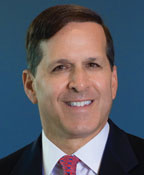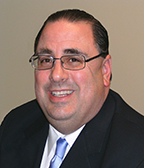 |
|
Roger P. Levin, DDS |
Face it, most dental practices don’t have dream teams. Sure, dentists like to think of their “staff” as a “team,” and sometimes even as a “family.” However, the harsh truth is that most practices don’t have a team—they have a group of individuals who are doing the best they can to properly complete their individual duties and get through the day.
Creating a strong team is extremely challenging for a variety of reasons. Every dentist faces a time crunch: That’s just the nature of being both the practice’s main producer and its owner. Due to the hectic pace of many dental practices, team building often becomes a lower priority. A concerted focus on active team building can pay huge dividends in terms of increased productivity, improved morale, and lower stress.
Remember, your team is one of your practice’s greatest assets. During this difficult economy, you need to maximize all of your resources. Building a stronger team is one of the best investments dentists can make to ensure their future success.
FIVE ACTION STEPS FOR TEAM BUILDING
Here are 5 action steps that turn your staff—a group of individuals with various skills, talents and interests—into your dream team:
1. Communicate Your Vision
All employees want to be part of something bigger. This is true for large, multi-national corporations with 100,000 employees, as well as an 8-person dental office. That “something bigger” is your vision statement. It provides a road map of where you want the practice to go in the next 3 to 5 years. Whatever you do, don’t keep it to yourself. It’s not some secret document that should be locked away in a vault. In fact, the only way your practice vision becomes a reality is if it’s shared with your team members. So communicate your vision and communicate it often. The vision statement should be reinforced during weekly and monthly meetings. By creating a shared vision of the future, you have taken the first step to building your dream team.
2. Get Rid of the Stress
I recently asked approximately 100 dentists to rank their stress level between zero and 10. Zero meant almost no stress, and 10 meant you were ready to jump off a bridge. The average answer of these 100 queries was a 7. In further discussion, even doctors who rank their stress at a level of 3 conceded that their stress was caused by spending too much time on administrative work, rather than performing dentistry.
The No. 1 cause for practice stress is outdated systems. When was the last time you redesigned your systems? Has it been more than 3 years? 5 years? 10 years? The older your systems are, the higher the stress level will be in your practice. Without updated systems, it’s impossible to build a long-term, high-performance team.
Documented step-by-step systems eliminate misunderstanding and confusion that lead to unnecessary tension and stress. Step-by-step systems allow staff members to perform their jobs effectively and efficiently. For example at Levin Group, clients streamline their practices and reduce their stress by implementing the Levin Group Method, which includes systems such as scheduling, case presentation, and customer service, among others. Systems should include a series of checklists, so that each team member understands exactly what is expected every day. Make it easy for your team members to succeed—and you will have a low-stress, highly productive workplace.
3. Prepare, Train, and Support
Systems—updated or not—are really just ideas until they are implemented. The only way for that to happen is through training. Unfortunately, Levin Group has seen too many practices rush new employees into their positions after a day or 2 of haphazard training. Then, the dentists and office managers wonder why the new team member isn’t measuring up.
For training to be successful, it must be standardized and continual. When systems are documented in a step-by-step manner with accompanying scripts, it is easier to train and cross-train the entire dental team. This focused approach benefits new team members and those team members without an extensive dental background. Training also establishes a level of accountability when combined with job descriptions for each position on the team.
Training your staff is not something that can be effectively accomplished in the time dentists may have between patient appointments. To ensure that team members fully understand their roles, time must be set aside away from patients, so that the proper focus can be achieved. Fortunately, there are many learning opportunities for the dental office and clinical teams today, such as seminars, dental conferences, and one-day in-office training.
In addition, Levin Group recommends setting aside 30 minutes during monthly team meetings to focus strictly on training. Those training lessons should be reinforced during morning meetings as necessary. Even high-performance teams need regular training, which can occur in-office or outside the practice.
4. Give Every Team Member a Playbook
Every football player from junior high to the pros receives a playbook. This is the player’s guide to on-field performance. While no one on your team will be asked to run an end-around or a blitz, they should have a playbook, too—it’s their job description, which contains a comprehensive list of duties and responsibilities. Often in high-stress practices, team members do not completely understand their responsibilities. For example, if the practice expects the hygienist to educate patients about practice services, then that objective should be written in her/his job description. The hygienist should receive support, training, and appropriate communication tools to fulfill her duties.
Team members respond better when their roles in the practice’s success have been clearly defined. As the leader, the dentist must convey to team members their roles in achieving the practice vision. For an office to be a high-performance practice, every team member must have a clear focus of his or her role and responsibilities on moving the practice forward.
5.Coach the Team
To reach their potential, your team needs to be coached, supported, and encouraged. Helping individuals grow is critical to their satisfaction in the practice, as well as to their performance. One coaching technique is to ask questions, rather than give directions. While it is far easier to tell a front desk coordinator, “Schedule her on Tuesday at 3 p.m.,” it is more of a growth opportunity to ask the question, “Where do you think we could put this patient?” or “Do you think there is a time that would be suitable Tuesday afternoon?” Asking questions taps into the expertise of team members and allows them to take ownership in the practice. Gradually, they will make their own decisions.
Successful leaders understand that coaching is essential to turn a group of individuals together into a team. No dentist ever accomplishes the vision alone; it is only through the hard work and commitment of other people that the practice succeeds. As the practice leader and owner, the doctor needs to take a group of individuals, fuse them into a team, give them the game plan, and then monitor their progress. A good leader provides the guidance and coaching that leads to greater success, individually and collectively, for the entire team.
IN CLOSING
Will your dream team always remain just a dream? It doesn’t have to be that way! You probably have a good staff—now is the time to turn them into a great team. Be sure to start sharing your vision—this is the first step toward instilling a team mentality. Then, give them the tools and support necessary for success, and your dream team could soon become a reality!
Dr. Levin is chairman and chief executive officer of Levin Group, Inc. Dr. Levin is a third-generation dentist, who brings his Total Practice Success Seminars to thousands of dentists and dental professionals each year. Levin Group can be reached at (888) 973-0000, at customerservice@levingroup.com, or levingroupgp.com.











